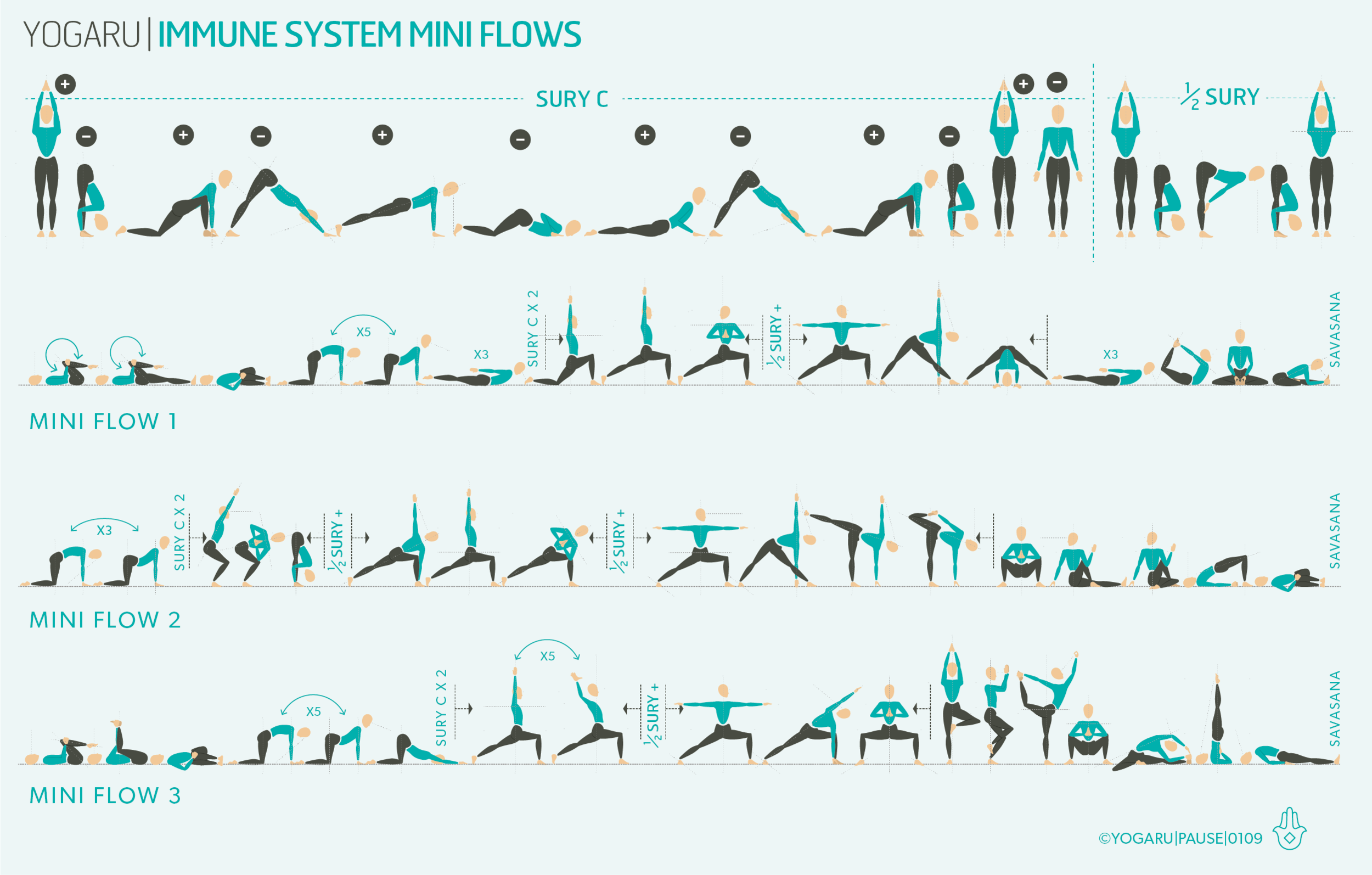THE BENEFITS OF YOGA
We know that the immune system works best when the body is in a state of homeostasis or put simply in balance. Balance is a word strongly connected to the many benefits of yoga. Regardless of the different reasons that bring us to yoga we inherently move towards balance physically and mentally when we practice. Yoga, and its many benefits, is one of the best supports in your toolkit for a strong immune system which helps you stay healthy and balanced. These benefits have been recorded for thousands of years and are only being scientifically proven in more recent years. Below are some answers to the question ‘how does yoga build a strong immune system?’. Along with some easy to access flows with poses that are particularly good at helping to boost your immune system.
YOGA & THE IMMUNE SYSTEM
Yoga stimulates several systems in the body which work hand in hand with strong immunity – the nervous, the digestive, the respiratory, the circulatory, the endocrine & the lymphatic systems. Stress related illness, ranging from the common cold, obesity, heart disease and depression, are on the rise. Stress causes inflammation in the body and weakens the immune system. Yoga is known to reduce physical and emotional stress in the body by tapping into the parasympathetic nervous system (rest, digest & restore response) when we use breath awareness; slow mindful movement; and repetitive flows. Yoga also promotes good gut health by stretching and compressing the whole digestive system and encouraging peristalsis (waves of muscular contractions) to remove unwanted waste and toxins from the body. The practice of yoga also brings our attention to the breath. Lengthening and slowing our breath is both very calming for the mind and helps the lungs fight off chest infections. The movement of yoga promotes good circulation which in turn increases the function of the lymphatic (white blood cells and toxin removal) and endocrine (hormone production) system to keep them working more efficiently and in harmony with wellness. For the immune system to work at its best all these systems need to be working in symmetry. Yoga is one of the few disciplines that benefits all these systems with an added bonus of giving you the ‘feel good factor’ too. Although all yoga will help keep these systems in balance, twists, backbends and inversions are the most powerful poses to practice when working with the immune system.
THE BENEFITS OF TWISTS, BACKBENDS & INVERSIONS
In yoga philosophy texts it is said that twists ‘destroy disease’. When we twist we temporarily constrict blood flow and when we release the twist a surge of fresh oxygenated blood rushes back. This twist and release action massages and stimulates the organs and helps the digestive system with maximum nutrition absorption; the respiratory system to build strong lungs; the liver and kidneys to remove toxins; and the lymph system to support white blood cell production. The same principle applies to backbends which stretch the front of the body and stimulate the organs of the abdominal and chest cavity. Backbends are particularly good for expanding lung capacity and opening the chest region. The higher the lung capacity the better our ability to feed all the cells of the body with fresh oxygen.
A healthy gut also has a strong link to our moods and emotional well-being. Stress leads to gut issues and similarly gut issues lead to stress. 95% of serotonin (the happy hormone) is produced in the bowel, stimulating the gut through twists and backbends release these happy hormones into the system and relieve stress, tension and anxiety and allow the body to concentrate on other jobs like building its defences.
Inversions boost circulation and increase blood and lymph flow which helps clear bacteria and toxins from the body and plays a vital role in building a strong immune system. Inversions are hidden everywhere in the practice. They are any pose where the heart is above the head. Along with the obvious poses like handstand and headstand there are lots of opportunities to take inversions in standing forward bends, downward dog, bridge and restorative poses like Viparita Kiranai.
EXPLORING IMMUNE SYSTEM FLOWS IN YOUR PRACTICE
Above are three mini flows, each sequence includes lots of twists, backbends and inversions to your practice to help keep your immune system strong. These three families of poses are all very invigorating and energising poses. For this reason these sequences are best practiced in the morning rather than in the evening. Each pose has a variety of different benefits so it is always good to mix it up as much as possible and alternate between the three sequences when you practice.
To save the images for personal use click and hold down the image until the ‘save image’ option appears; on Mac hold down ‘control’ and click the image to get the option box; on PC right click on the image to get the option box. Scroll down in the ‘option box’ and click ‘save image’.
Ruth Delahunty Yogaru




